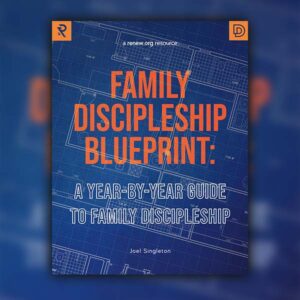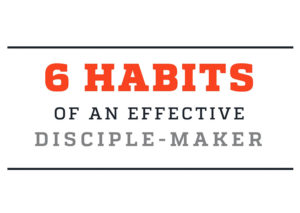7 Reasons Why We’re Failing – Part 2

7% of the next generation globally identify themselves as Christ-followers.
This Barna Group statistic was the focal point of a three day conversation among leaders recently gathered in Orlando from various youth ministry organizations.
Are we, the church, losing the next generation? Are we really satisfied with the results we’re seeing? We can’t stick our heads in the sand, pretend everything is okay, and keep doing everything as we’ve always done it. That’s the definition of insanity. Something must change!
Last week, I began to unpack SEVEN REASONS why I believe we’re failing as the church, and what we must do about it. Over seven weeks, I’ll attempt to tackle these reasons one at a time.
If you missed last week’s blog, you can read REASON ONE here.
REASON TWO
We have strategies and systems that undermine Biblical disciple-making.
If by disciple-making we believe we’re talking about the fulfillment of the Great Commission, then does everything that we do as ministries and ministers support and advance that as our mission? Is what we are doing producing more and more people who live out the Great Commission in their everyday lives?
One thing you will hear Sonlife say over and over again is this:
Disciple-making happens within the context of relationships.
Consider Jesus as our model for what it means to make and multiply disciples. How did He accomplish this? What did He prioritize?
“He appointed twelve that they might be with Him and that He might send them out to preach.”Mark 3:14 NIV
Jesus’ method for making disciples was both RELATIONAL and MISSIONAL.
RELATIONAL DISCIPLE-MAKING
Jesus spent a lot of time with His disciples. They traveled together. They ate together. They prayed together. They were with Him when He taught the crowds and ministered. He spent time alone with them, teaching and encouraging them. Then as His following grew, Jesus identified twelve to focus on and spend even more time with. Mark tells us the express purpose of Jesus selecting the Twelve was that He might be with them. This is the BE WITH factor of disciple-making. It’s the old adage of more being caught than taught. Only by them being with Jesus could He model for them what kingdom living looked like.
“After this, Jesus and His disciples went out into the Judean countryside, where He spent some time with them, and baptized.”John 3:22 NIV
The Greek word for spent some time is DIATRIBO. It’s literal translation would be to rub in. Diatribo was commonly used to describe the process for breaking in a pair of leather sandals, or even rubbing spices into meat so that the flavor will saturate the entire piece. The implication is clear. Jesus spent time with His disciples so He could “rub off” on them, or even more profoundly, “rub into” them. Jesus wanted His character and priorities to saturate their lives, and He knew that only by spending time together could He accomplish this.
MISSIONAL DISCIPLE-MAKING
Jesus engaged His disciples in the mission. He wasn’t satisfied with them learning concepts. He wasn’t interested in them gaining copious amounts of knowledge. He began with the BE WITH phase and then moved on to the SEND OUT phase. Jesus knew for genuine disciple-making to occur, He would have to activate their faith. As His disciples, they would be expected to LIVE OUT everything they had TAKEN IN. They were going to be asked, even expected, to live out Jesus’ character and priorities.
Jesus was sending His disciples out into the world to live out the Great Commandment and the Great Commission. They were being sent out to:
LOVE GOD
LOVE PEOPLE
MAKE DISCIPLES
BE WITH and SEND OUT.
Now, think about the strategies and systems we have in our churches for discipleship. How much BE WITH and SEND OUT are reflected in our strategies and systems? Corporate gatherings have value, but they don’t generally incorporate BE WITH or SEND OUT. Most ministries recognize this, so they structure their ministries with discipleship classes or small groups to create environments more conducive to relational connection and conversation. But let’s think about these structures more honestly.
In a small group or a discipleship class, the structure communicates that the teacher or small group leader is the one responsible for discipling. Those in the class or group then assume that the only way they can make disciples is if they teach a class or lead a small group. But what if they don’t have the spiritual gift of teaching, leading or shepherding? They then think that disciple-making is for a select few, and it’s not for them. If only a select few teach discipleship classes or new believers classes, then our structure inadvertently communicates that disciple-making happens in a class by a teacher.
Also, most of our classes or small groups are structured in such a way that a more mature believer will teach a less mature believer. Even if that less mature believer becomes more mature and has the desire and gifting to lead their own small group, they will likely replicate the process and only work with less mature “insiders.” This becomes a closed loop, where we only work with the already convinced. We never make new disciples from among those who are “outsiders,” non-believers.
INTENTIONAL DISCIPLE-MAKING
If we are going to infuse our strategies and systems with a structure that reflects disciple-making that is both RELATIONAL and MISSIONAL, we are going to have to also be INTENTIONAL. We are going to have to think differently about the way we structure our ministries. Sometimes, a simple shift in our mentality toward RELATIONAL and MISSIONAL thinking will be enough to embed our current structures with disciple-making effectiveness.
Take your small groups as an example. If your typical group has a dozen people in it, you can infuse your group with relational disciple-making by breaking the group down into four triplets. The small group leader has an apprentice leader they are mentoring, and each of them have a triplet leader they are coaching. The small group leader, their apprentice, and the two other triplet leaders are each discipling two other people in the small group. The triplets connect “offline,” talking during the week, encouraging one another, praying for one another, and holding one another accountable to apply what they have learned in small group. The triplet leaders are modeling what this looks like in their own life for the other two they’re discipling in their triplet. Now, instead of just one person leading a small group, you have four people discipling others in their small group.
Let’s consider a discipleship class like a class on the basics of the faith for new believers. Rather than just having new believers show up to the class on their own, encourage those you’re leading to bring their new believing friends to the class with them. In this way, the class will become a catalyst for disciple-making conversations throughout the week. If the class has homework, they can do this together during the week with their new believer friend. They can connect with their new believer friend throughout the week, encouraging them, praying for them, and sharing with them how they are applying God’s Word in their life that week. Now, instead of just having a class with eight new believers, you have eight new believers being intentionally discipled by a friend.
Sometimes, our strategies and systems are so antithetical to disciple-making, we have to go back to the drawing board and start something new. A friend has started something at their church called GO TEAMS. They have three or four ministry projects outside their church that will attract people with different passions and gifts. All the GO TEAMS meet for a season of training in basic disciple-making, like how to share your faith and disciple a new believer. Then the GO TEAMS are sent out to the ministry projects in their local community to work with people, reaching the lost and discipling the found. Sometimes, the GO TEAM project just lasts for a season. Sometimes, an entirely new ongoing ministry is launched. These GO TEAMS are structured to emphasize both BE WITH and SEND OUT!
What next?
- Do a comprehensive evaluation with your key leaders. Make a list of every program, event, and activity on your ministry’s calendar. Weekly, monthly, quarterly, annual programs and activities. Look at it all. Answer the question: how is this program, event, or activity helping us to make disciples?
- As you evaluate every program, event and activity, put it in one of four categories. Is it’s primary purpose: WINNING the Lost; BUILDING the Believer; EQUIPPING the Working; MULTIPLYING the Disciple-Maker.
- Be brutally honest. Where is BE WITH and SEND OUT happening in your ministry? Where is BE WITH and SEND OUT happening in your own life?
- Be intentional. Start in one small area and adapt or implement strategies and structures that will emphasize RELATIONAL and MISSIONAL disciple-making.
If we do what we’ve always done, we’ll get what we’ve always got. That’s not good enough. The next generation needs more.
This post originally appeared at: 7 Reasons Why We’re Failing – Part 2 – Sonlife
If you have enjoyed reading this, please consider joining our email list!











